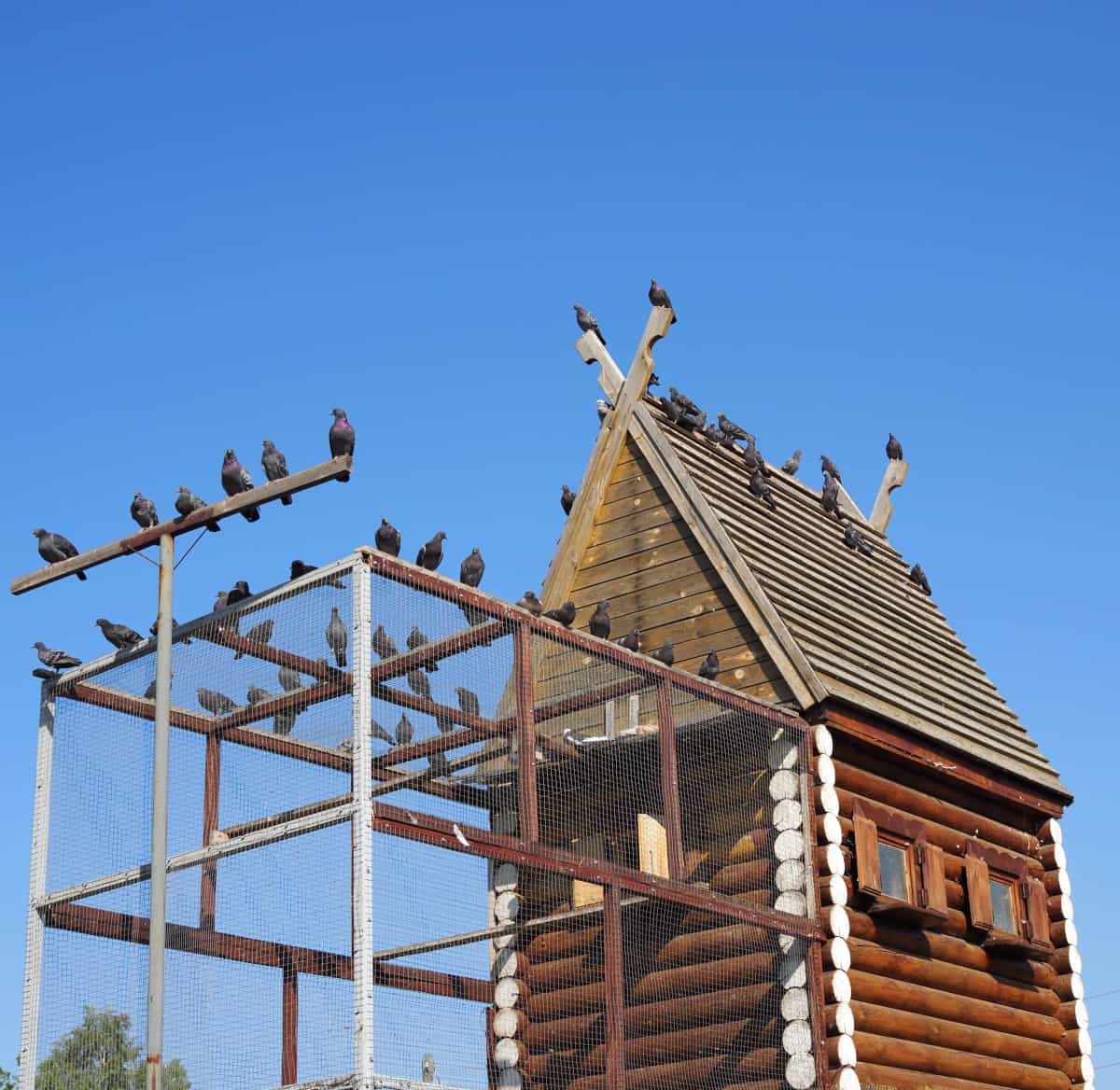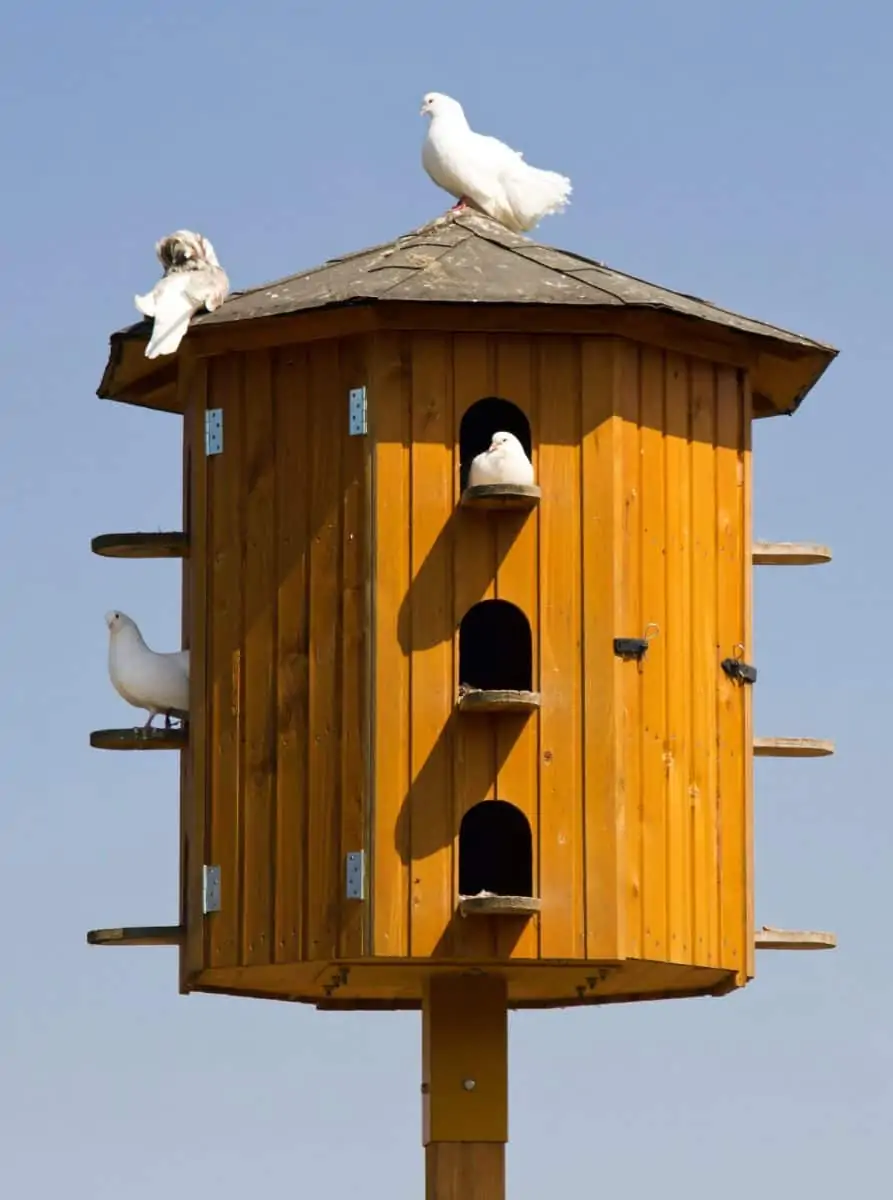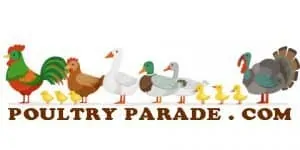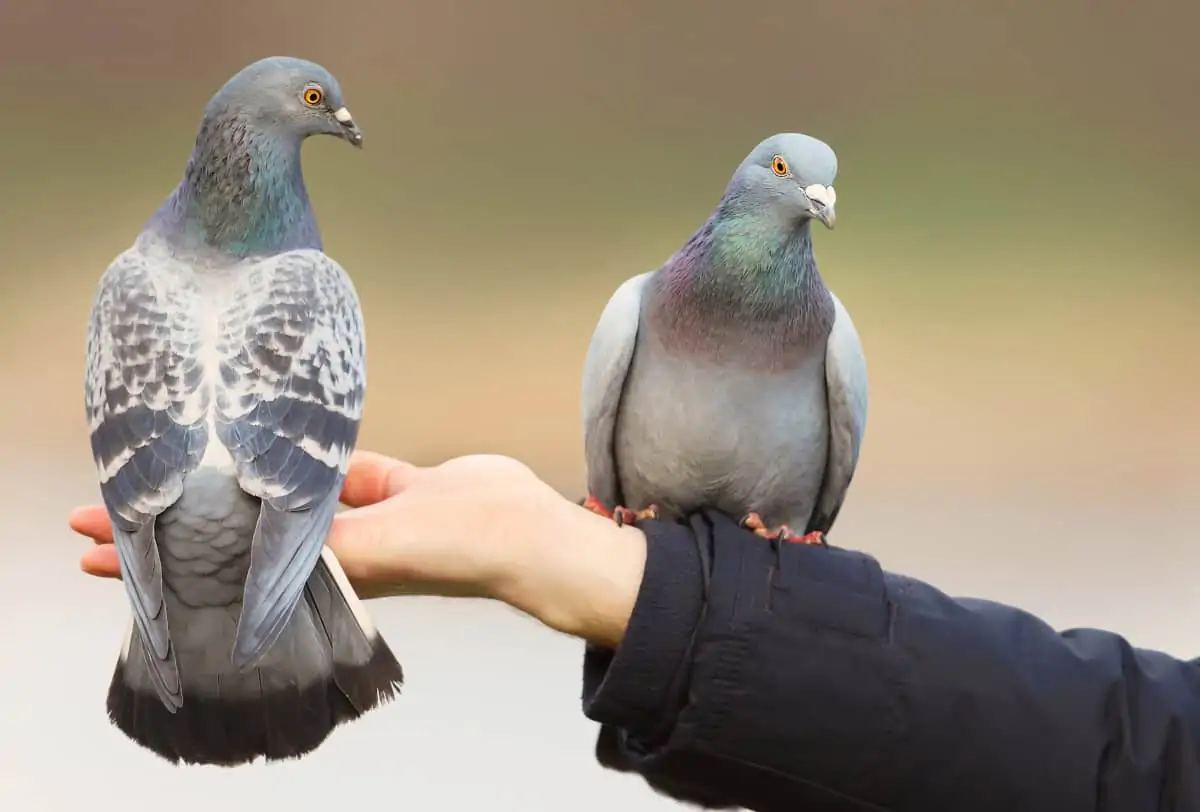Pigeons are among the lesser-known backyard animals, and that is a shame. Keeping pigeons is both fun and rewarding, and they take up very little space compared to most other livestock birds.
To raise free-range pigeons you need to get get them used to the surrounding area. This is done by keeping new birds in a cage until they start nesting. Young pigeons that grew up in your flock will remain there on their own accord.
That sounds simple, and it is for the most part. But if you want free-range pigeons, you also need to know a little more about housing, feeding, and a few other things. This article will go through everything you need to know to raise and keep your own pigeons.
Table of Contents
Why Keep Free Range Pigeons?
Pigeons thrive in freedom. They benefit from the exercise that flying provides, and I would argue it’s also much more fun for us as well.
Besides, free-range pigeons take up very little space per bird and thus take up much less space than if kept in an aviary. Especially if you want more than just a few birds. While an aviary requires quite a lot of space for even a smaller flock (making it impractical for breeding and meat production), you can have tens of birds in a loft the size of a small shack.
Yes, free-ranging does mean you will lose a pigeon from time to time to predators and other causes, and you may not want to free-range very expensive breeds or your prize birds. But there is no reason why the rest of them can’t enjoy freedom. And while you will lose some, occasionally, you will also gain a stray pigeon that happens to fly by and decide to settle down in your dovecot.
Consider Why You Want to Keep Pigeons
Pigeons are kept and bred for several reasons:
- Racing homing pigeons
- Pets
- Meat pigeons
- Exhibitions
- Breeding and selling
Your purpose determines, to some degree, your choice of breed. Homing breeds, such as the American Show Racer, are bred to fly long distances, while utility breeds, such as the Giant Runt, are bred to grow very large. Others are purely for ornamental and exhibition purposes, such as the Budapest Short-faced Tumbler.
Consider what you want your pigeon hobby or business to be about, and then decide on a suitable breed.
Can you keep pigeons for the eggs?
Removing an egg from time to time is not a problem, but pigeons are not great for a consistent supply of eggs. They only lay two small eggs in each round, and if you remove those, the hen will start laying again, leading to calcium deficiencies and potentially death.
You can keep their calcium intake up by supplying them with oyster shells, but removing the eggs will stress out the pigeon, which potentially leads to a lowered immune system.
Besides, pigeons will never produce nearly as many eggs as chickens. If you want to enjoy eggs from some bird species other than chickens, consider quail, which are quiet at take up very little space.
Build a Pigeon Loft or Dovecot
Before buy your first pigeons, you need to prepare a space for them to lay their eggs. For free-rangers, there are two options: pigeon lofts and dovecotes.
Pigeon Loft
A pigeon loft is a building intended to keep pigeons. This is usually a shack or a larger building.

A pigeon loft has one entrance shared by the pigeons. The building is large enough for a person to enter through a door in order to clean the interior, provide feed and water, and take care of the pigeons.
The pigeon entrance is usually equipped with a Landing Board/Pigeon Door that (when activated) will allow the pigeons to enter the loft but not leave. This way, the keeper can catch the birds when needed.
In many ways, a pigeon loft is similar to a chicken coop. In fact, if you are already keeping chickens, you may be able to use the existing chicken coop as a chicken loft as well. Chickens and pigeons can easily share a coop as long as there is a separate entrance for the pigeons.
Dovecote
A dovecote is a raised, free-standing structure for housing pigeons.

What distinguishes dovecotes from a pigeon loft is that there is no entrance for the pigeon keeper and no shared entrance for the pigeons. Instead, they are equipped with one pigeonhole (nest) for each nesting couple.
Dovecotes come in many different shapes and sizes, and you can be very creative in your design.
Should I Use a Dovecote or a Pigeon Loft?
A pigeon loft makes it very easy to manage your pigeons. They usually have just one entrance for the pigeons that can be locked when needed, and you have easy access to the nests. Lofts can (should) be predator-proofed, keeping the pigeons safe during the night and preventing rat infestations.
If you plan to use your pigeons for sport, meat, or exhibitions, a pigeon loft is usually preferable.
A dovecote takes up a lot less space, and some would say they are more visually appealing than a loft. You also won’t have an indoor area that requires cleaning.
But as they have individual pigeonholes (and often located up high), they are much harder to catch and thus harder to manage for sporting, breeding, or meat purposes. Closing each hole every evening is also not practical, which means you are more likely to lose a few more to predators.
If you want to keep pigeons just for the joy of watching them, a dovecote may be preferable.
Perches
Free-ranging pigeons need perches to sleep on. This is not as necessary if you use a dovecote as long as there are trees or other places to sleep nearby. But any loft will need sufficient perches for all pigeons to sleep.
Pigeons are often territorial about their perch, so make sure you provide adequate space for all of them.
Pigeon Nests
Domestic pigeons originate from the wild dove, which nests in the crevices of rock formations. In the cities, wild pigeons look for similar habitats such as buildings and walls.
A domestic pigeon nest needs a nesting bowl, which keeps the eggs from rolling out. The bowl should be about 10 inches (25cm) in diameter and can be made of plastic, clay, or any other non-toxic material. A dog food bowl or a flower pot dish will suffice.
Add a little hay or straw to the nesting bowl, and it will be ready for your pigeon hen. Wood shavings can be used but ensure sufficient ventilation as the dust can be unhealthy for your pigeons to breathe in. You can also buy mats made specifically for bird’s nests, which will cost a little more but are easier to change when you’re cleaning the nests.
A mating couple should have two nests. This is because the hen will start laying on the second clutch before her first squabs are ready to fly. Make sure each nesting box has two nests next to each other divided by plywood or other non-transparent material.
Pigeon Doors
Both dovecotes and lofts need a landing board in front of the entrance that the pigeons can land on and take off from. On pigeon lofts, these boards often function as a hatch that you can close for the night to protect against predators.
Most pigeon doors are also equipped with a door trap. When activated, this trap allows them to enter the loft or a nest but keeps them from leaving again.
Cleaning the Pigeon Loft
At least once a week, you should go through the loft with a broom and clean out all the droppings. Pigeons don’t poop in their nests, but they will sit on the perches during the night and poop on the floor. To save some time, you can place a sheet made from plywood or metal below the perches, which is easy to remove and clean.
You usually don’t need to clean the nests while there are eggs and squabs unless it looks particularly dirty. After they have left the nest or been harvested, you can take the bowl, clean it, and add new bedding so it’s ready for the next clutch.
Feeding Your Pigeons
Feed stores sell pigeon food, but you can also make your own by mixing layer feed for chickens with wheat and barley. If you keep racing pigeons, add high-energy carbohydrates and fats.
You can feed your pigeons two times daily on a plate, or you can use a feeder, which will save you some time. Ensure the feeder is out of reach for rats and other pests, such as on a raised platform inside the loft. For water you can use a water dispenser.
Like chickens, pigeons have a gizzard that requires grit to break down the feed. However, free-ranging pigeons are able to find what they need in nature, and you don’t have to provide it to them. But make sure to give grit to any pigeons that you keep in cages or aviaries.
How to Keep Pigeons from Flying Away
When you get your first pair of pigeons, keep them locked up for a while, but make sure they can see the surrounding area. Build a small cage around the entrance of the loft that they can go in and out off. This allows them to get to know the area, and they will be able to find their way back home when you finally let them fly free.
If you don’t have a loft but plan on using a dovecot, you can build them a separate, temporary cage: make a sheltered box with two nests in one end and a cage in the other end. This allows them to start nesting while also getting to know the area. Alternatively, you can build a small cage and attach it to one of the pigeonholes in the dovecot.
Always buy pigeons in couples of one male and one female as they will usually not leave once they have started nesting. When the hen has laid her two eggs, then you can open or remove the cage.
There is no guarantee that your pigeons will not fly away, and some will do that no matter what you do. But you can do a lot to entice them to remain. Pigeons live in colonies and will generally remain there all their life. If you add new pigeons to an existing colony, they will be much more likely to stay.
I also recommend starting a new colony with 3 or 4 couples as that increases the probability that they will remain once you let them loose.
Will Young Pigeons (Squabs) Fly Away?
Young pigeons will not fly away from where they have been raised. Once your first squabs can fly, all you have to do is build more nests for them to lay their eggs and expand the colony.
How to Catch Your Pigeons
From time to time, you need to catch one of your pigeons. Perhaps so you can transport it to exhibitions or competitions or sell it. Or because you need to take a look a one that looks ill or cull an injured bird.
All you have to do is activate the door trap. As the pigeon enters, it will not be able to get out again, and you can easily catch it.
Should I Band My Pigeons?
Banding is commonly used for competitions and exhibitions. This is evidence that the pigeon is bred by you, as the band can only be put on very young birds before their feet grow too big. Breeders also use bands to keep track of their birds, such as generations, genetic lines, etc.
Band your squabs when they are just four to seven days old. Just pick it up, bend the hind toe (hallux) backward so it runs parallel to its leg, and gently push the band on.

Harvesting Pigeon Meat
Pigeon meat is harvested when the squabs are just about to leave the nest, at 25 to 28 days old. As wild pigeons nest on mountainsides, they have evolved to remain in the nest until they can fly well, at which point they are almost fully feathered and the size of adult pigeons.
Squabs can usually be picked up by hand if they are not old enough to fly. Should one flare up and fly off, leave the loft for a while until it settles back into the nest.
Pigeons can be culled humanely with a swift blow to the head with a hammer. Afterward, you can butcher it, as shown in the video below.
Pigeons are very popular delicacies in many countries. Their meat is dark, juicy, and tastes slightly gamey. Not dissimilar to quail but with a stronger flavor and a hint of beef.
Some pigeon breeds are big enough to make a decent main dish for one person. Others are smaller, and you will probably want two per adult.
How to Breed Pigeons
Breeding mostly happens entirely by itself, and all you need to do is provide feed and sufficient nesting opportunities.
However, if you are engaged in exhibitions or carrier races, you will want to breed the best pigeons within your area of interest. This process is not much different from when you introduce new pigeons: catch a male and a female with the best genetics and keep them in a cage. When the female has laid her two eggs, you can let them out again.
If two pigeons are fighting and unwilling to mate, you can separate them with wire mesh within the cage. After a few days, they will usually exhibit much more interest in each other, and you can remove the divider.
How many Pigeons Can I have?
Wild pigeon colonies are often large and consist of several hundred birds. The real limitation is your time and resources as well as local regulations. Practically you can have about 50-70 without much more work than just keeping a few couples.
Be Considerate of Your Neighbors
One might assume that pigeons should be kept in an aviary unless you live very remotely. After all, you don’t want fifty birds to poop in your neighbor’s pool and eat their vegetable garden.
But in reality, pigeons are not very interested in vegetables or berries, although they might go for a pea patch. Unless you keep a huge colony, your neighbors might not even notice your newfound hobby.
There is one exception: pigeons prefer to sit on the highest point in the area (they originate from rock doves, remember). If your neighbor’s house is much taller than yours, there is a high likelihood that they will spend most of the day sitting and pooping on his roof. If this is the case, you may want to have a talk with your neighbor before growing the flock above a few pairs.
Do Pigeons get Diseases?
Yes, they do. In fact, there are a lot of pigeon diseases. But it’s not a common occurrence as long as you keep the area clean. Pigeons are clean birds, and they don’t spend much time on the ground, where many of the common poultry diseases lurk.
To avoid spreading diseases within your flock, keep new pigeons in isolation for two weeks, if possible, and keep an eye out for signs of illness. A sick pigeon will usually have a combination of symptoms, including lethargy, puffing up their chests, and unkempt feathers. They may also make coughing or sneezing sounds.
In pigeon sport and exhibitions, your pigeons are usually required to be vaccinated against pox, paramyxo, and paratyphoid. Without a vaccination certificate, you will likely not be admitted into competitions.



